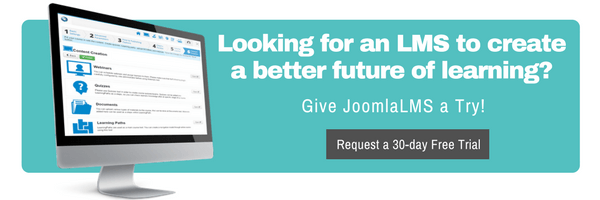Self-paced eLearning is in high demand on the worldwide market. According to studies, the market reached $46.9 billion in 2015[Resource]. Millions of people around the world choose distant courses over traditional ones, but the problem is that not all the courses existing on the market are qualitative, well-designed and structured.
Self-paced eLearning is in high demand on the worldwide market. According to studies, the market reached $46.9 billion in 2015 [Resource]. Millions of people around the world choose distant courses over traditional ones, but the problem is that not all the courses existing on the market are qualitative, well-designed and structured.
Frequently students waste money on the information they can easily find on the Internet. The design and development of a qualitative and not least an effective eLearning course is a complex process that requires careful data gathering, audience analysis, planning and constant corrections of mistakes.
How to create such courses? An infographic here below highlights the main principles of effective course creation. The secret is unveiled!
 Smooth navigation
Smooth navigation
- Designing the course remember about carefully placed navigation buttons (play, next, previous, pause, replay), informational icons and home page link.
- Avoid any distracting elements whether that be irrelevant images, illogical learning paths or outbound links that lead the user away from the course. A learner nowadays is easily distracted that is why there shouldn’t be anything preventing them from studying.
- Introduce understandable course logic.
- Write clear headlines.
- Provide guidelines not to let a user get stuck.
- Explain specific terms.
- Stick to the same design and navigation icons location though the course.
- Provide each course slide with the title reflecting its main idea. One slide=one idea.
- Once you’ve determined the main course objective follow it through the course (the course objective should be S.M.A.R.T).
- The course should have clear description with outlined course goals. Before taking the course a student should know what to expect and what benefits they get from the course completion. (More on the topic Instructional Design Explained - Interview with George Joeckel).
- Estimate workload.
- Remember that not all students have equal opportunities.
- Apply different learning styles, personalize the learning and center it on the student.
- Create courses that allow to practice analytics skills and creativity. (More on the topic 10 Ted Talks That Will Help You to Make ELearning Meet Modern Learners’ Needs).
Plain text – the last thing your course needs to possess. Long texts are difficult for comprehension and should be avoided. By adding interactivity to the courses, you help learners to go through the learning, practice and put knowledge to use. (More on the topic Learning Snacks or 4 Keys to Engage Today’s Learner).
To make the course interactive and engaging:
- Apply gamification mechanism (According to Ambient research, game-based learning is expected to grow from $1.5 billion in 2012 to $2.3 billion in 2017).
- Use real-life scenarios and simulations to allow users to improve real life performances.
- Apply storytelling technique. People memorize stories better than bare facts and by adding stories into an eLearning course you add meaning to the data you want your learners to take a mental note of.
- Practice collaborative learning. Create social communities to let users learn from one another, share experiences and knowledge. (More on the topic The Secret of Building Professional Learning Communities – Interview with Meenoo Rami).
- Diversify the course with visual elements. The fact that visual information is processed by our brain 60 000 times faster than ordinary text leads to all-round usage of visual content in eLearning design. Animation, photos, images, infographics, videos and other types of visual content can be widely used to create appealing and engaging eLearning courses.
- Give rewards to increase students’ motivation.
- Link course activities to their prior knowledge.
Extensive feedback features and reports, provided by most Learning Management Systems, give tons of information per analysis and clarify what goes wrong, why the course doesn’t bring an expected result and/or a student falls behind.
Correctly chosen education toolsWhen you choose an authoring tool or a Learning Management System pay attention to the functionality they provide, modernity and user-friendliness of interface, mobile adaptability. (More on the topic 10 Reasons to Build Your ELearning Project With JoomLMS [Infographic]).
Download Infographic
What to read next?
10 Reasons to Build Your ELearning Project With JoomLMS [Infographic]
Learning Management System Comparison
eLearning Project Launch CheckList









